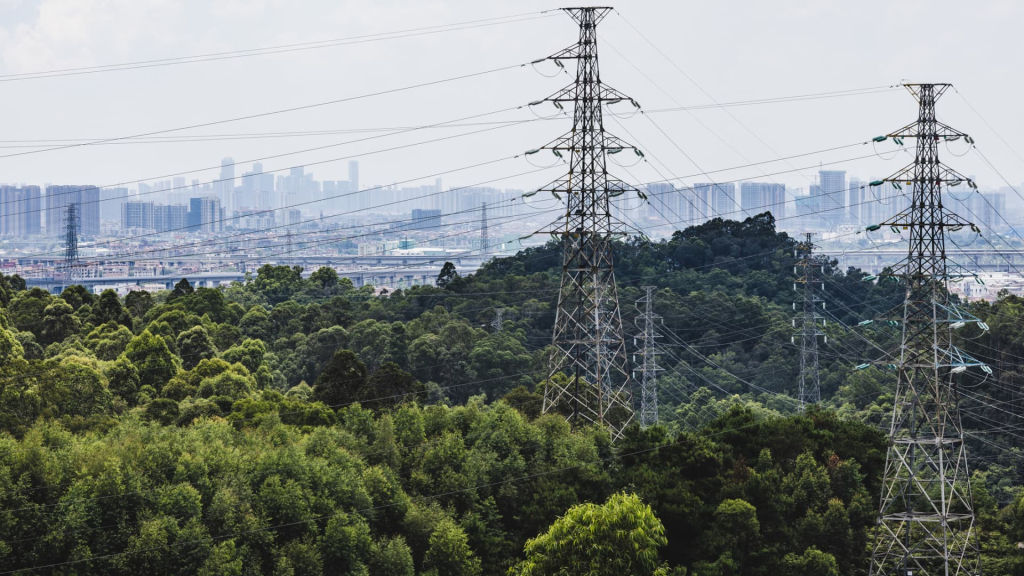As inflation rates ease, U.S. households are grappling with significant increases in electricity costs. According to the consumer price index data released for May 2025, electricity prices have surged by 4.5% over the past year, nearly twice the overall inflation rate for goods and services.
The U.S. Energy Information Administration (EIA) has projected that retail electricity prices will continue to outstrip inflation until 2026. The agency has noted that prices have consistently increased at a rate faster than the overall inflation since 2022.
David Hill, executive vice president of energy at the Bipartisan Policy Center and a former general counsel at the U.S. Energy Department, attributes these price hikes to a fundamental imbalance of supply and demand.
Economists and energy specialists link these rising costs to several contributing factors. Hill emphasized that the increasing demand for electricity, paired with the decommissioning of older power-generating facilities, is far outpacing the addition of new generation sources to the grid.
Regional Disparities in Pricing
On average, U.S. consumers spent approximately $1,760 on electricity in 2023, as reported by the EIA, which referenced federal statistics from the Bureau of Labor Statistics.
Cost disparities are significant depending on geographic location and individual consumption patterns. In March 2025, the average U.S. household was billed around 17 cents per kilowatt-hour, with rates fluctuating from about 11 cents per kWh in North Dakota to approximately 41 cents per kWh in Hawaii, based on EIA data.
According to experts, households in certain areas will experience sharper increases in their electric bills compared to others. For instance, regions such as the Pacific, Middle Atlantic, and New England, which already have higher electricity rates, are expected to see increases that exceed the national average.
Joe Seydl, a senior markets economist at J.P. Morgan Private Bank, pointed out that electricity prices are influenced more by regional factors rather than global market trends that affect oil prices.
The EIA anticipates a 13% rise in average retail electricity prices from 2022 through 2025. This equates to an increase of approximately $219 in the average household’s annual electricity expenses, climbing from $1,683 in 2022 to around $1,902 by 2025, assuming usage remains steady. Households in the Pacific region anticipate a significant 26% increase during this period, pushing rates beyond 21 cents per kilowatt-hour, while those in the West North Central region are expected to see an 8% rise to nearly 11 cents per kWh.
Nationwide trends in electricity consumption are also becoming relevant. Data centers, which are essential for modern technology applications, are significantly fueling the surge in electricity demand, according to experts.
Electricity demand from data centers tripled over the past decade, amounting to 176 Terawatt-hours by 2023, and it is projected to multiply by two or three times by 2028, according to the U.S. Energy Department. By 2028, data centers are anticipated to account for up to 12% of the total electricity consumption in the U.S., a significant rise from 4.4% in 2023.
Jennifer Curran, senior vice president of planning and operations at Midcontinent Independent System Operator, noted that a surge in demand has been largely unexpected, primarily driven by advancements in artificial intelligence technology. This growing demand suggests that the U.S. economy could utilize more electricity for data processing than for the manufacturing of all energy-intensive products combined by 2030.
Continued electrification trends among households and businesses are also expected to further elevate electricity demand. The U.S. is gradually moving away from reliance on fossil fuels to mitigate greenhouse-gas emissions, leading to a rise in the use of electric vehicles and efficient electric heating technologies, which in turn place additional demands on the electric grid.
Population growth and intense activities such as cryptocurrency mining are further exacerbating the situation, according to Hill from the Bipartisan Policy Center.
Infrastructure Challenges
As electricity demand escalates, challenges concerning transmission and distribution infrastructure have become increasingly evident, Seydl noted. He pointed out that rising electricity prices largely stem from infrastructural limitations.
Michael Cembalest, chairman of market and investment strategy at J.P. Morgan Asset & Wealth Management, highlighted that the growth of the transmission network is lagging significantly behind Energy Department targets for 2030 and 2035. He further emphasized equipment shortages, citing that delivery times for transformers have expanded from four to six weeks in 2019 to an alarming two to three years currently.
Cembalest also detailed that about half of all transformers in the U.S. are nearing the end of their operational lifespan and will require replacement, especially in regions prone to natural disasters such as hurricanes, floods, and wildfires. The inflation rate for transformers and similar equipment has surged to the second highest among wholesale goods in the U.S. since 2018.
Additionally, the decommissioning of outdated fossil-fuel plants has transpired at a faster rate than the introduction of new energy-generating capacity. Rising costs for labor and materials have further compounded the difficulties associated with building new facilities, Hill remarked.


























